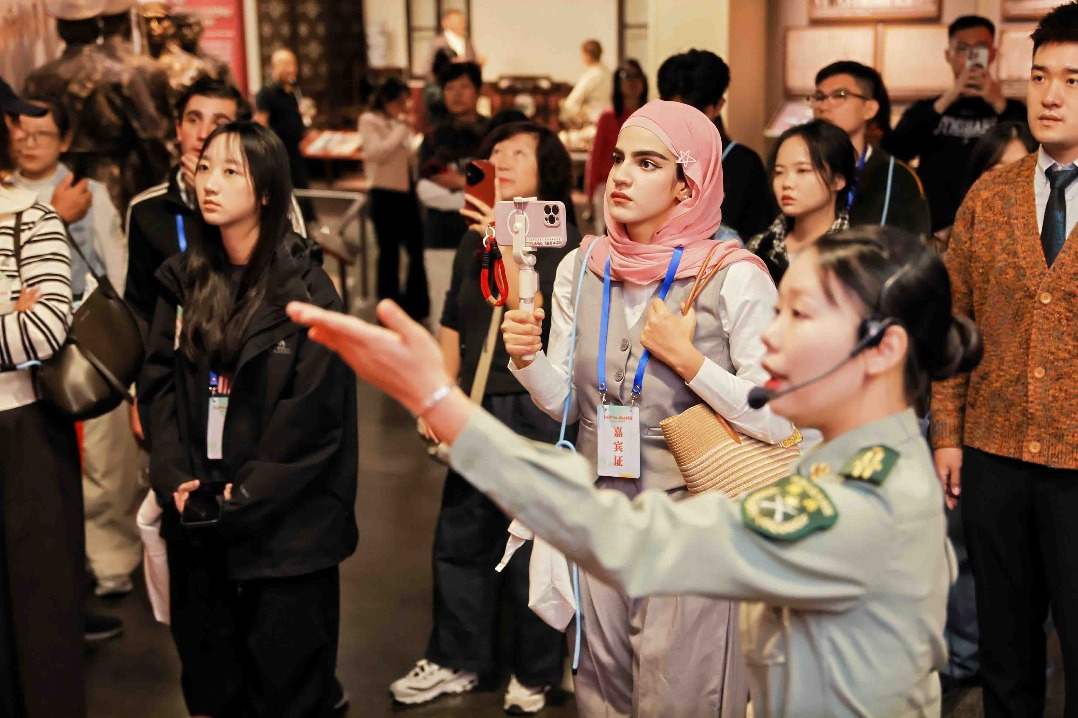Gen-Z Taiwan volunteer joins Minqin's desert afforestation efforts

In the heart of the vast Gobi Desert, young volunteers from across the country battle wind, sand, and scorching sun to plant trees and reclaim desertified land. Among them is 20-year-old Lee Ting-Hsuan from Taiwan, whose first visit to Northwest China has given her a firsthand glimpse of the enormous effort behind the region's "green wall".
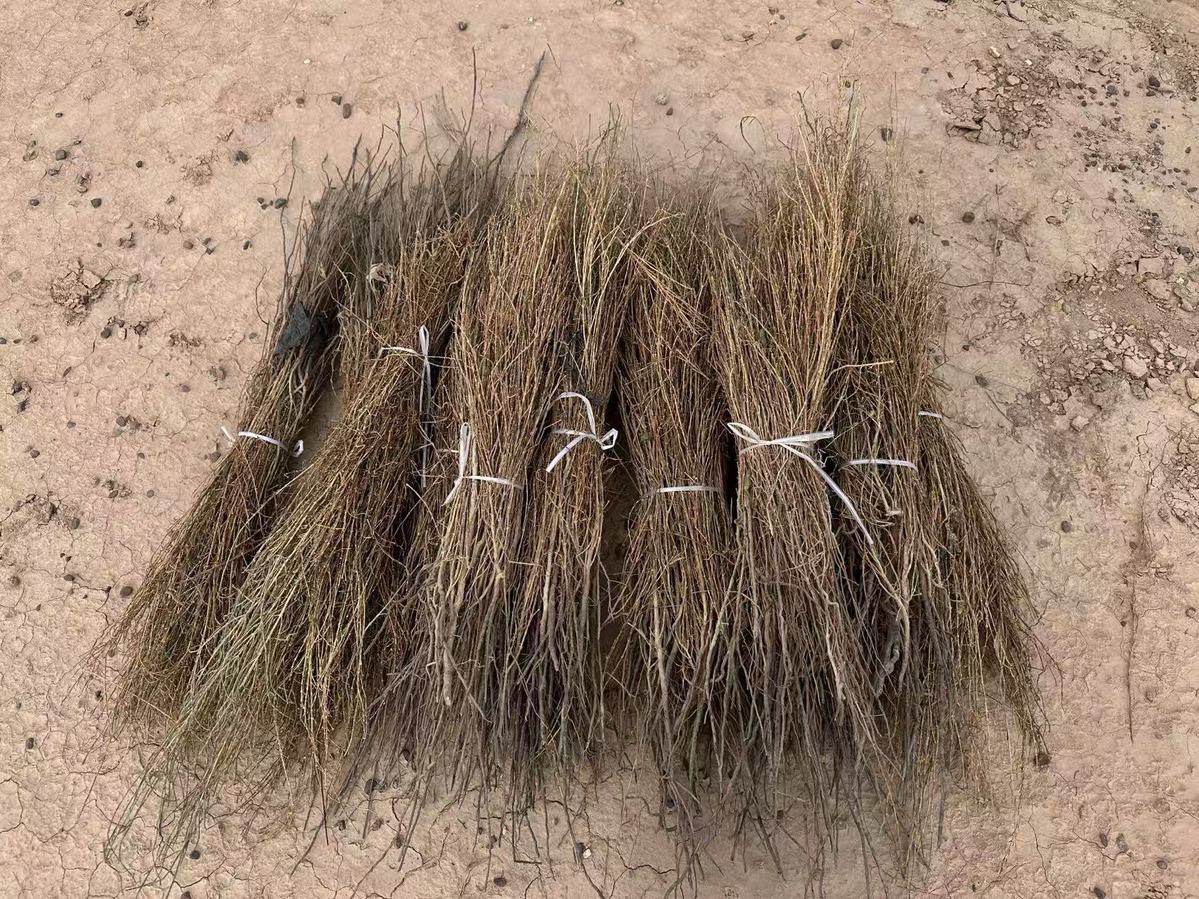
Lee fumbles slightly but earnestly as she follows local volunteers and learns how to plant drought and salt-resistant suosuo trees. Born and raised in Taiwan's rainy climate, she shivers as her nose and fingers redden under the harsh desert wind.
The Peking University student has given herself a target: to plant suosuo seedlings in 20 pits, each holding four to five young plants. "I hope all the seedlings I plant will survive," she says.
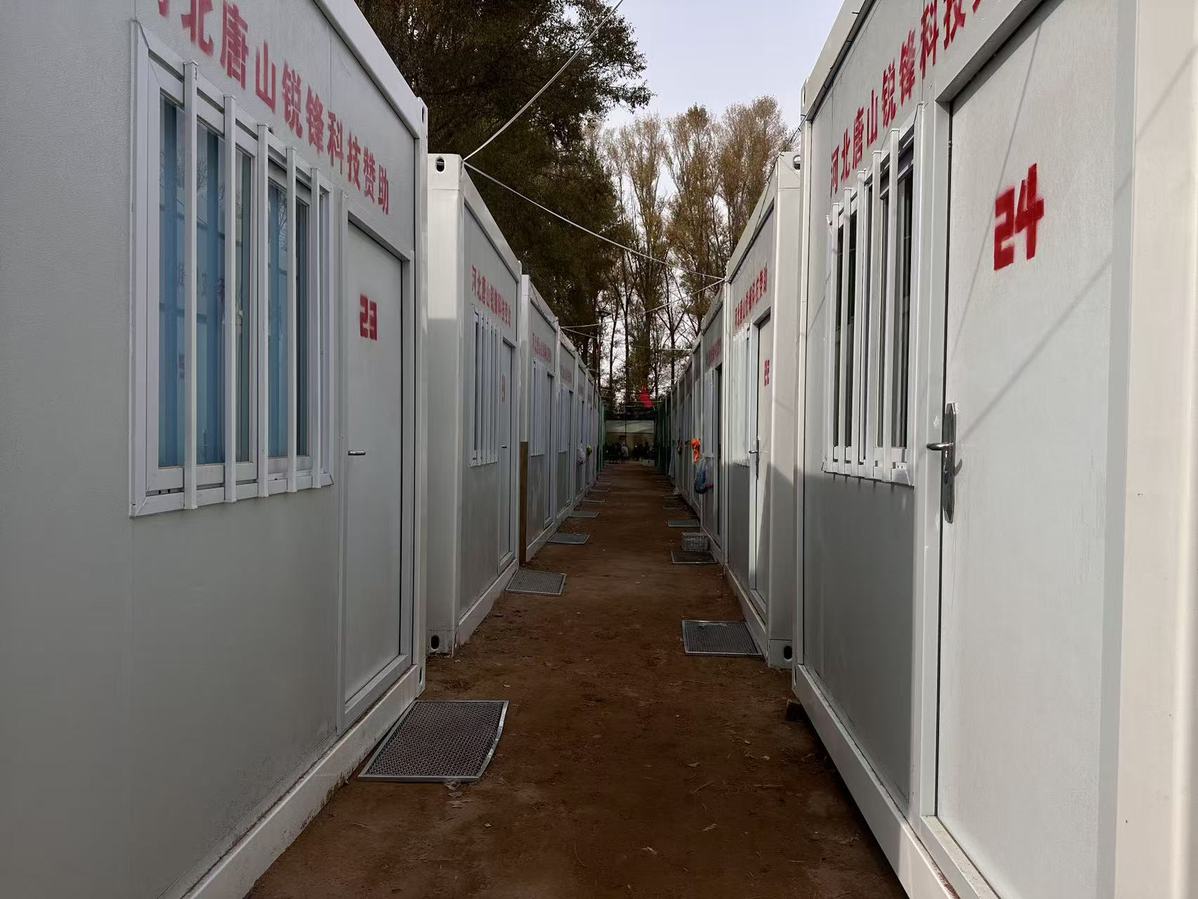
Lee is one of thousands of volunteers who travel annually to Minqin county, a desert oasis in Gansu province. Settled between the Badain Jaran and Tengger deserts, Minqin has spent more than 70 years reclaiming desertified land. Artificial afforestation now covers about 153,000 hectares, with a 380-kilometer-long shelter belt stretching across vulnerable areas, according to a local government release in March.
The volunteer program was launched in 2007 by Ma Junhe, a native of Minqin. "I read that my hometown could be buried by sand within 17 years while I was working elsewhere," Ma recalled.
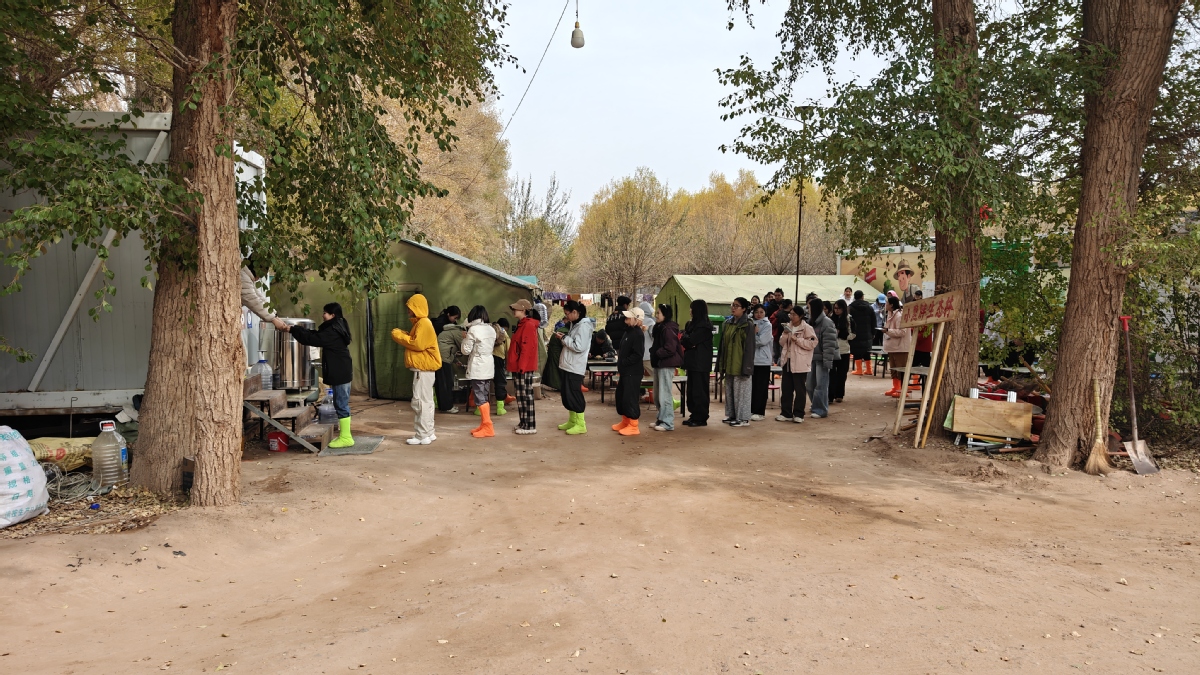
Starting with only a dozen volunteers, the initiative has since welcomed more than 80,000 participants, all planting suosuo trees and maintaining clay sand barriers that stabilize dunes. Their efforts have restored about 5,667 hectares of the Gobi Desert.
"Compared with early straw mats, the clay sand barriers are far more effective and durable," Ma said. "They fix the sand in place and protect seedlings, and the materials are locally sourced and low-cost." Biodegradable fabrics and polylactic acid bags have also been used to safeguard young trees.
Volunteers work eight to nine hours a day in harsh sun and wind. Li Xiuniang from Northeast China's Heilongjiang province joined the autumn session in October. "It's tiring but rewarding," she says. "This mission isn't just for Minqin; it's for all of China. Everyone should contribute."
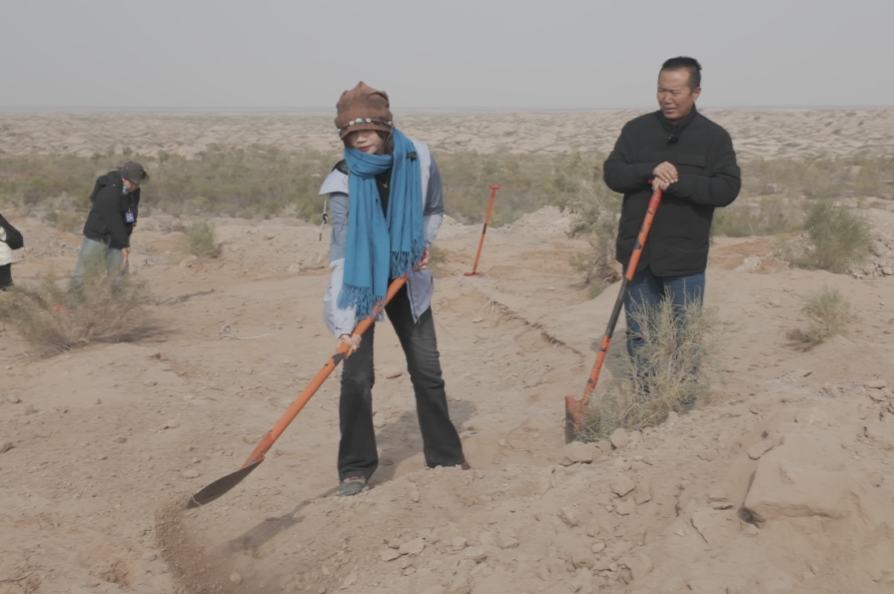
Most volunteers are young adults, but the program also welcomes seniors up to over 80 years old and children with their parents. One memorable participant, an 85-year-old man, traveled alone from Shanghai in 2015 to plant trees with Ma's team.
"Young people today really enjoy meaningful public welfare activities," Ma said. "They find value in contributing to society." Many, like Li Xiuniang, document their work on social media, raising awareness and inspiring participation. Videos often show volunteers in bright sunglasses planting seedlings, cooking local meals in camp, and celebrating after work.
The camp also benefits local communities. Women earn supplemental income during off-season planting, while donations fund meals and accommodation for volunteers. "A worker can earn roughly 10,000 yuan ($1,409) for two months," Ma said.
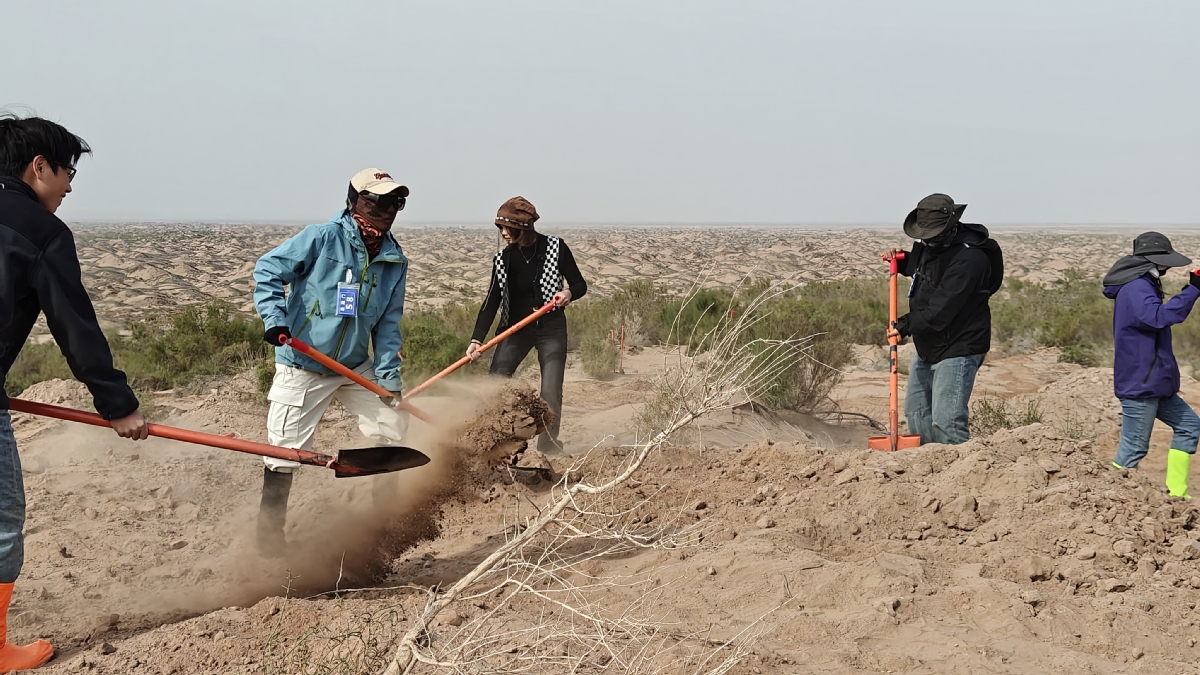
This volunteer camp has made a positive ecological impact. Desertified land in Minqin has decreased from 90.34 percent to 88.18 percent, while sandified areas fell from 75.81 percent to 75.57 percent in recent years. Fixed dunes slow wind speeds, reduce soil erosion, and prevent sand from reaching as far as Beijing.
In addition to Lee Ting-Hsuan, around 20 young volunteers from Macao also joined the program. Su Kun, a member of the Gansu Provincial Committee of the CPPCC representing Macao, leads this group. "Through tree planting, people in Macao gain a deeper understanding of Northwest China and its cultural and geographic diversity," Su says. "Experiencing the work firsthand shows that there's no such thing as effortless tranquility — every moment of peace comes from our dedication and hard work."
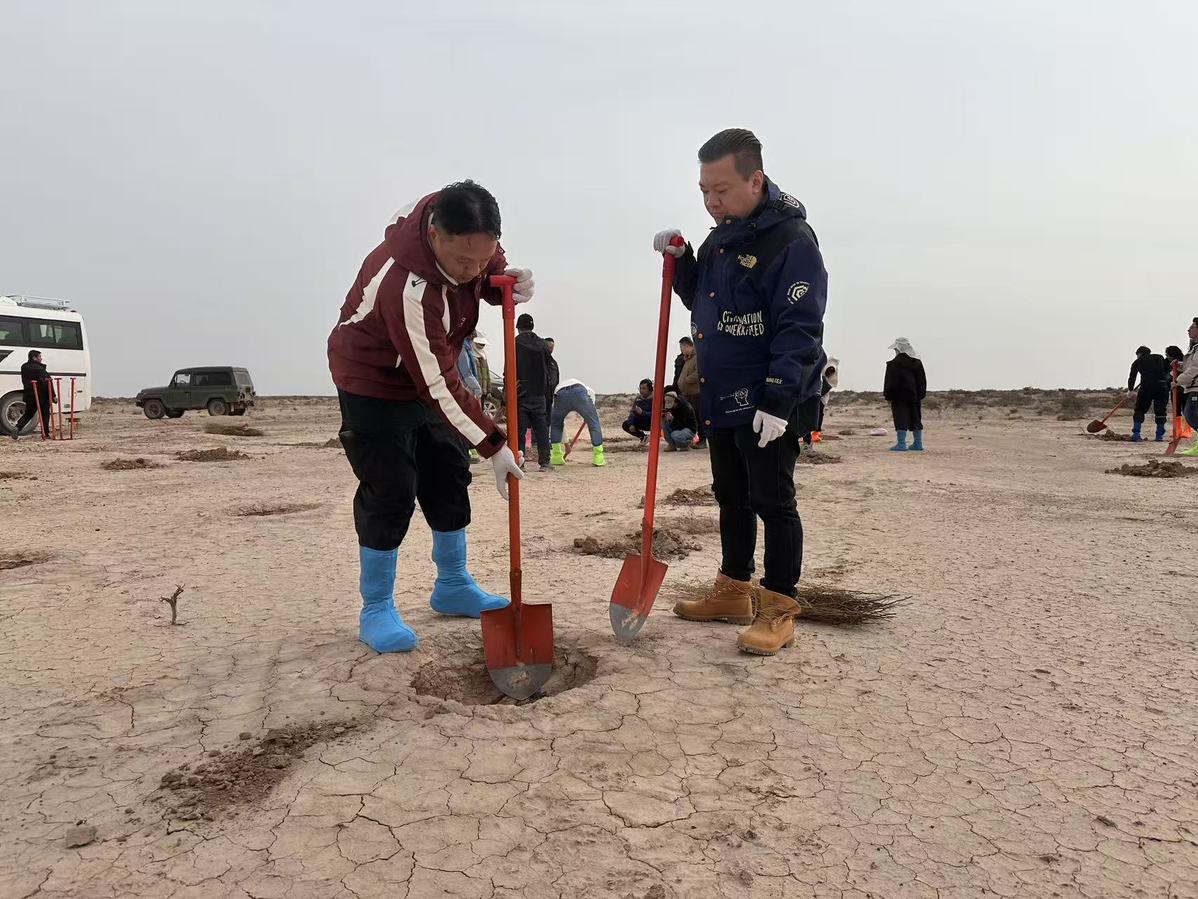
As Lee digs her 20 tree pits alongside Su, she reflects on the younger generation's role in ecological protection. "It's tough, but planting suosuo trees in the desert feels meaningful."
Across China, tree planting remains a national priority, with March 12 designated as National Tree Planting Day. According to the latest data released by the National Forestry and Grassland Administration, 4.45 million hectares of forests were planted nationwide in 2024, and 2.78 million hectares of desertified and rocky land were rehabilitated.
- Gen-Z Taiwan volunteer joins Minqin's desert afforestation efforts
- Over 20 Gen Z foreign guests to explore Baise city in Guangxi
- Japanese prime minister criticized over provocative Taiwan remarks
- Beijing's air quality improves further
- Lancang-Mekong countries vow to target telecom and cyber fraud
- China slams Japanese leader for refusing to withdraw her remarks
















